- Expert advice/
- Invites & paper/
- Invitations/
- Wedding Details Card: Everything To Know
- Invitations
Wedding Details Card: Everything To Know
What is a wedding details card? Do you need to include it in your wedding invitation? Here's everything you need to know about detail cards.
Last updated July 1, 2025
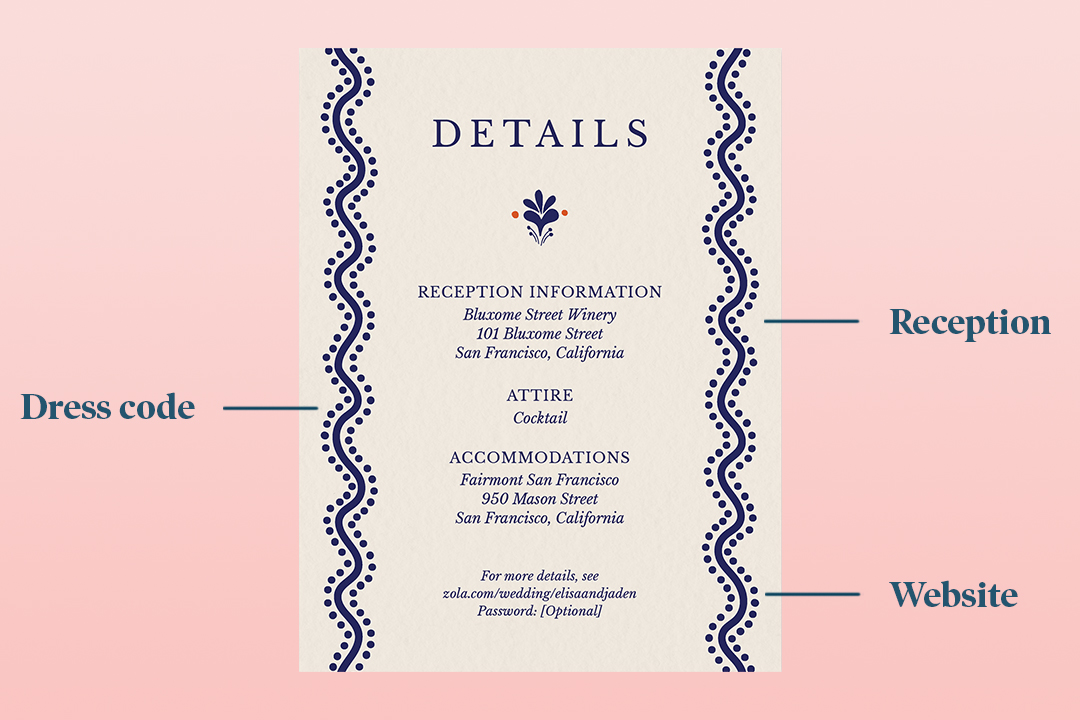
Shop enclosures
View allWedding planning includes a lot of details. Between your wedding venue, directions to the reception, dress codes, and any arranged transportation, there's no shortage of items to consider. Naturally, it's important to communicate those details to your guests clearly, cue wedding details cards.
What is a wedding details card? Think of it as the document that includes the info that doesn't fit on your actual invite. Others call wedding details cards enclosure cards or wedding invitation inserts. However you refer to them, these cards are the CliffsNotes of wedding specifics for your guests.
What are wedding details cards?
Wedding invitations are more than an elegant design and the date of your nuptials. Wedding details cards, sometimes called wedding enclosure cards, include the information that doesn't fit on the invite or RSVP card. They give guests a high-level overview of the wedding and the most important pieces of wedding information—aside from the wedding date, of course!
Wedding details cards give guests a fuller picture of your special day and keep them informed of what they should know, such as dress code and directions. Wedding details cards match the style and aesthetic of each couple's wedding invitation suites, which typically include your save the dates, RSVP cards, return envelopes, and postage.
Some couples have plenty of details for wedding invitations—more common with multi-day events or destination weddings—so they need additional pieces of stationery to get the appropriate details across. When it comes time to stuff your wedding invitations, you may include reception cards, weekend events cards, and accommodation cards. If you have important info to share but don't need to send out several items, a wedding details card may be perfect for you. Just make sure you don't cram everything on one piece of wedding stationery—that's what a wedding website is for.
Whoever is invited to your big day should get a wedding details card. After you send out your save the dates, your formal wedding invitations should be mailed to your guest list about three to six months before your wedding date. If you're having a destination event, send out your wedding invites earlier so guests can make travel plans, and aim for six to nine months out.
The anatomy of wedding details cards in wedding invitations
Don't let the little things slip through the cracks! Dive into the critical details for your guests on carefully thought-out wedding details cards. Include information that provides the "where," "when," "how," and "what" for your big day. For example, make sure to include cards for:
- Accommodation details
- Transportation information (Is a party bus driving guests to and from venues?)
- Directions and/or a map
- Dress code information and details to keep in mind
- Wedding website URL
If you're having a destination wedding or a multi-day affair, wedding details cards might be the place to share those extra details. Think of them as a simplified weekend itinerary document that gives guests an overview. For example, Friday night is the cocktail reception, Saturday is the wedding, and Sunday morning is brunch. There are fun and creative ways to convey this information—including small graphics—to guests.
If you're having multiple events that entail more details than a simple date, time, and location, you might opt for multiple wedding invitation enclosures with your custom wedding invitations. As a reminder, enclosure cards contain various pieces of wedding information, including itinerary or special accommodation information. For instance, if you're having a specific event that has its own set of details and a different location, you might find it easier to include a card just for that event. A week-long wedding trip with special cultural considerations or a multicultural wedding that entails two ceremonies should have all this information on wedding details cards.
Of course, some couples decide to do digital wedding invitations. If you choose to go this route, you don't need to worry about sending out wedding details cards in the mail. However, you should still include all the key information you would have on a physical wedding invite. No matter the medium, the message has to land. Check out our guide on wedding invitation etiquette for more help!
Accommodations details card
Ensuring your guests are well taken care of is a top priority when planning your big day. As such, the accommodation details on your wedding information card should be precise. Offer multiple lodging options, from cozy inns to convenient hotels, to cater to different preferences and budgets. Be sure to provide clear contact information for each accommodation choice and any booking codes or special arrangements you've made for your guests. Adding these thoughtful touches to your wedding details card helps guests navigate their stay and contributes to seamless and enjoyable wedding celebrations for everyone involved.
Directions details card
Help your guests make the physical journey to your wedding celebration by adding a friendly directions section to the details card. Include clear instructions between relevant locations, like the ceremony venue or shuttle pick-up points, and consider adding visual aids to the card design, like simple maps or landmarks, to make it foolproof. Remember to mention any parking information or alternative transportation options! Your goal is to make transportation as smooth as possible so your loved ones arrive to celebrate your special moment stress-free.
Reception insert card
Get your guests ready to party with a dedicated reception details card. Share the venue address, start time, and any specific instructions for parking or entrance. Remember to include a gentle reminder on your details card wedding invitation to RSVP and submit meal preferences, if needed, so you can plan accordingly.
Itinerary details card
Start by outlining the key events, from the "I dos" and dance floor shenanigans to dinner service and bidding the happy couple farewell. Include timings, locations, and special notes to keep the party flowing smoothly. Give your guests a foolproof roadmap to your carefully curated celebration.
Wedding details card wording and etiquette
Unsure how to word wedding details cards? Start with the basics: clearly state each event's date, time, and location. Make it personal by infusing your unique style, whether it's a classic and formal event or a laid-back and rustic wedding. Remember, brevity is your best friend—keep it concise while ensuring all the essential information is there. Lastly, don't forget to proofread; you want your cards to be as flawless as your love story.
Wedding details card vs. wedding websites
These days, it's common for guests to have access to a handy wedding website in addition to a physical wedding details card. Wedding websites are a great way to keep guests informed of the latest info and keep all the wedding invite details in one secure spot. Wedding websites also allow guests to access essential information from anywhere, meaning that if they don't have their physical invite handy, they will still know the address of the reception.
The main difference between wedding details cards and a wedding website is that a website is virtual and can include much more information, such as the story of how you and your partner met, activities to do near your wedding venue, and links to your wedding registry. The decision boils down to personal preference and the vibe you want for your big day. Whether you go traditional or tech-forward, make sure it reflects the unique character of your love story!
Get the perfect wedding enclosure cards with Zola
Let your wedding details cards give your guests a sneak peek of the incredible festivities you have planned, tying together the love and special moments that will make your wedding day unforgettable.
Perfecting your cards is a breeze with Zola by your side. Whether you call them detail cards or wedding invitation enclosure cards, they're one and the same—vital pieces of the wedding puzzle. With Zola's user-friendly tools and wedding details card examples, you can effortlessly craft beautiful, informative wedding details cards to help you and your guests get the most out of this special day. Let's dive in and create those wedding details cards that will have everyone saying, "They've got it all figured out!"
Up next for you
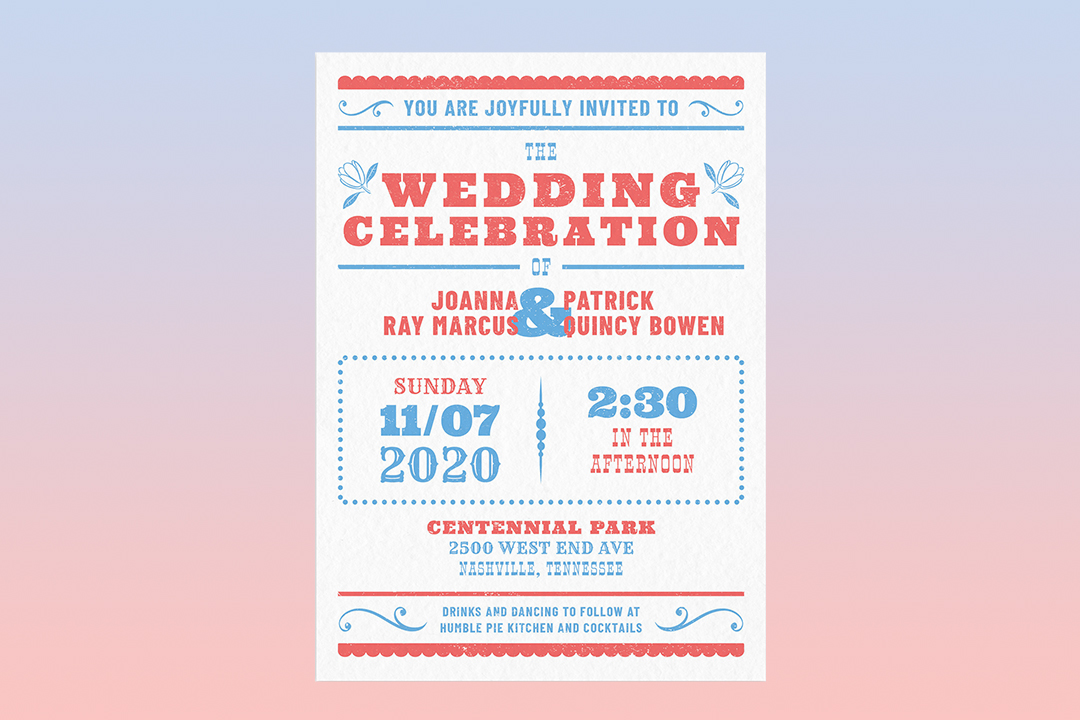
21 Unique Wedding Invitation Ideas
List
We have scoured the web for the most unique wedding invitations on the stationery scene, and we’re sharing them here.
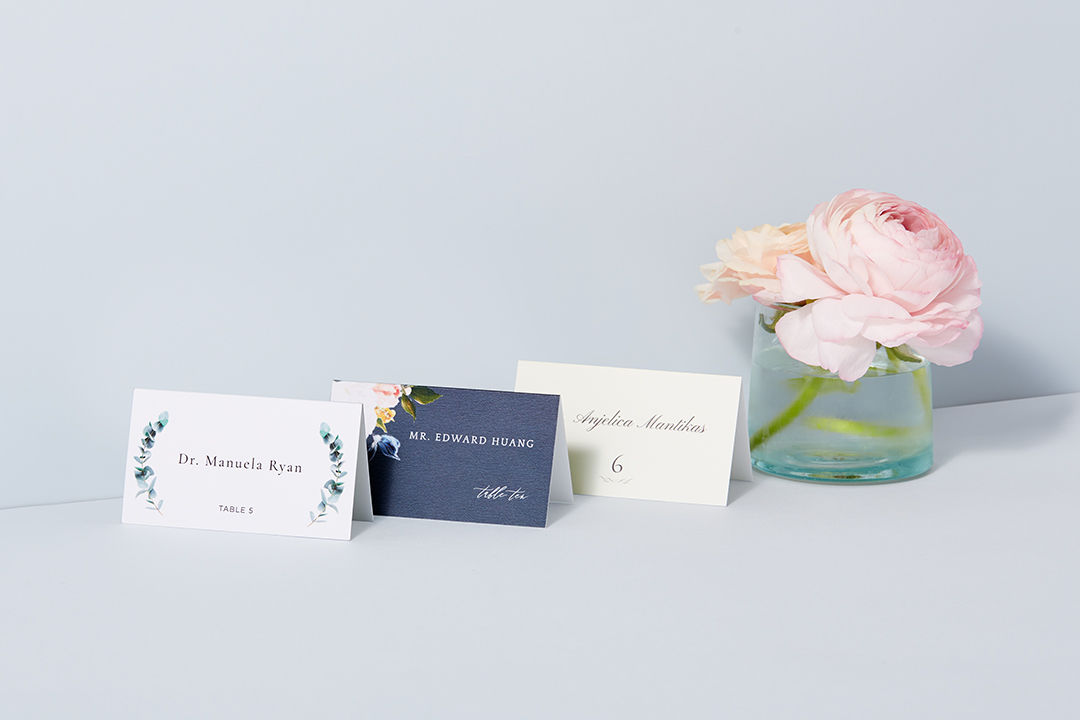
A Guide to Escort Cards
How-To
Escort cards take the place of a well-heeled usher and guide your guests to their tables. This guide will break down how to use escort cards to the fullest.
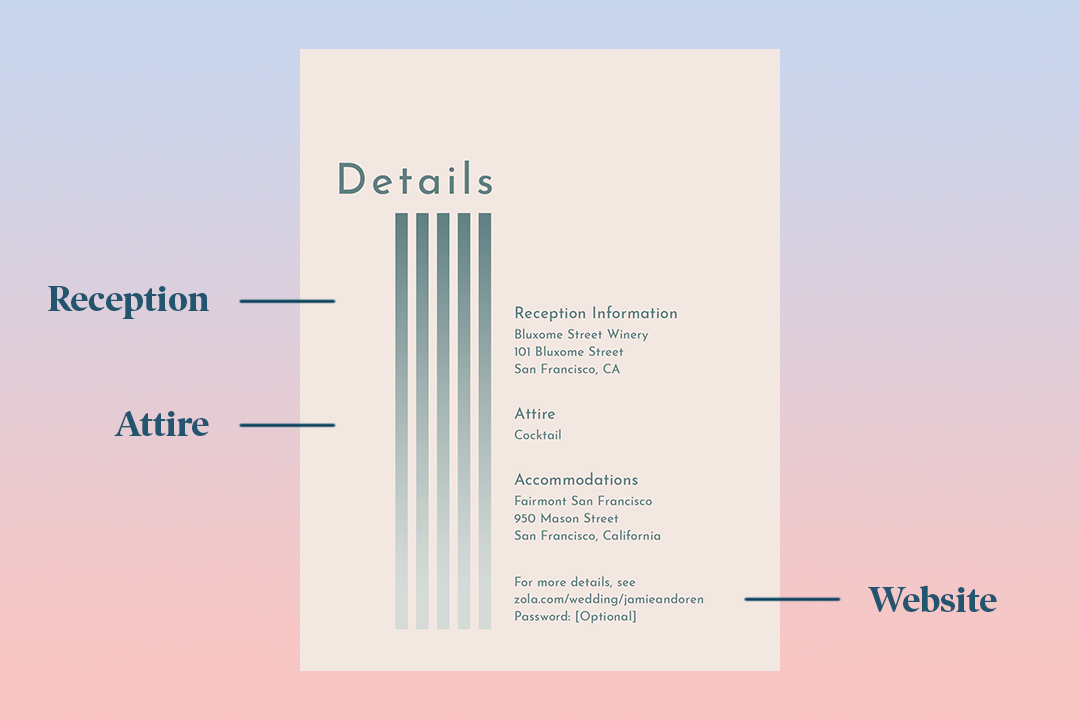
A Guide to Enclosure Cards
How To
Starting to create enclosure cards for your wedding? Follow along as we break down everything you need to know.
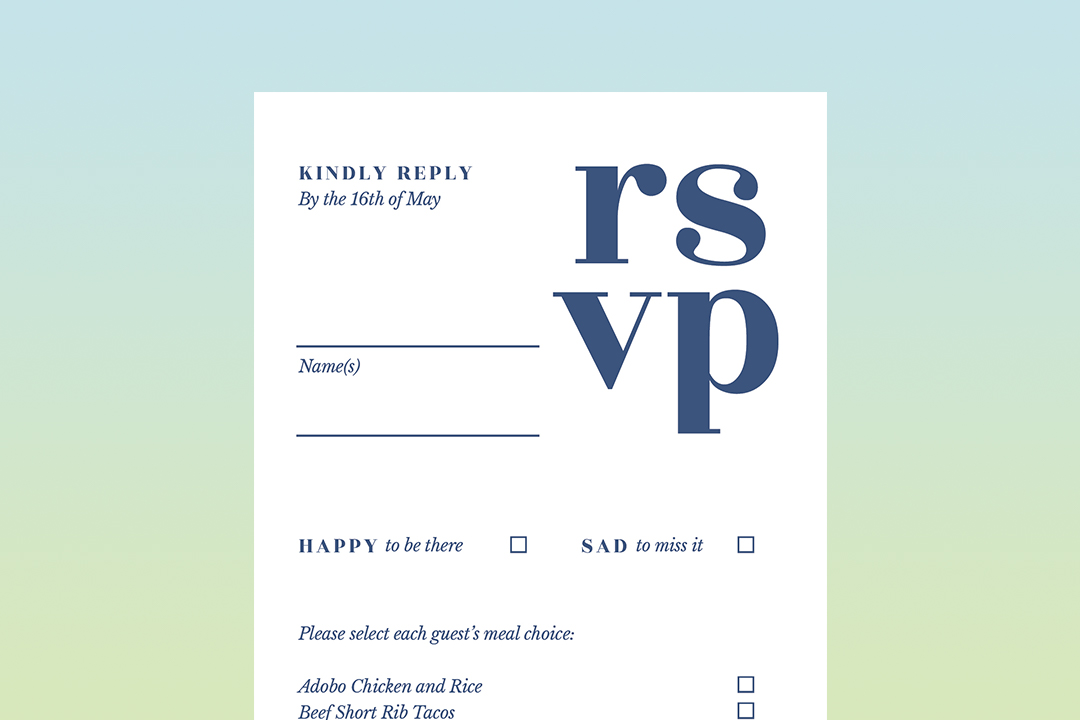
An Expert Guide to Wedding RSVP Cards & Complete Stationery Packages
Inspiration
Master wedding RSVP etiquette and discover complete wedding stationery packages with perfectly coordinated RSVP cards, free addressing, quality paper, and matching designs.
Featured
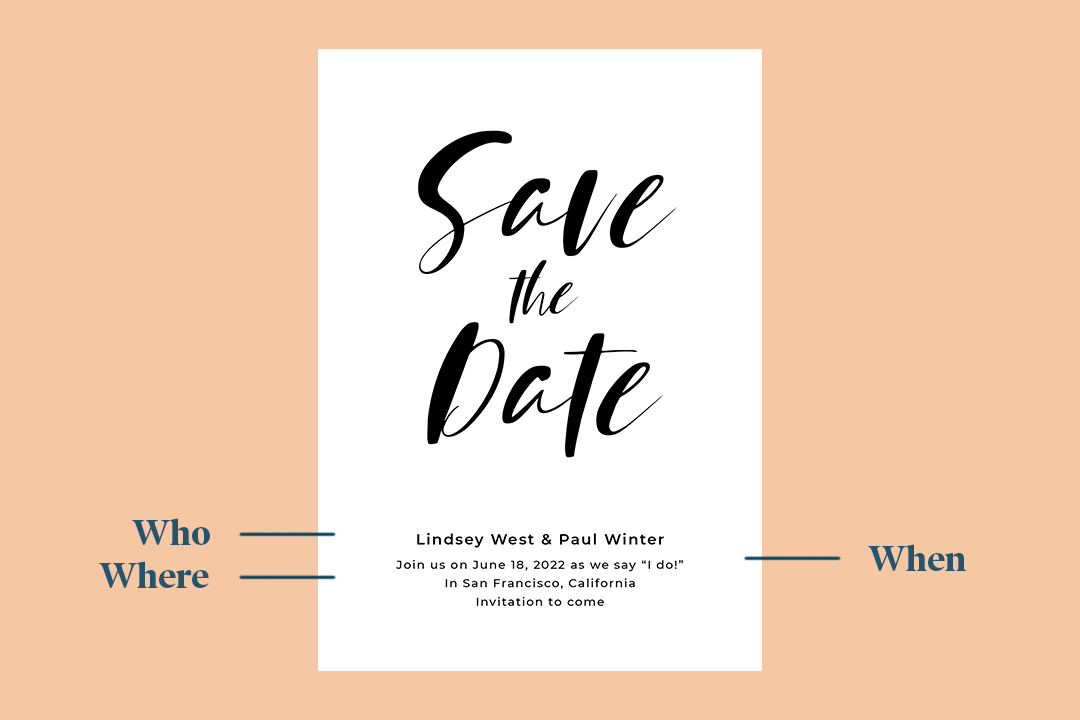
A Guide to Save The Dates
Inspiration
Save the dates add an extra touch of style and coordination to your wedding. Find out why and when you should send your save the dates with this complete guide.
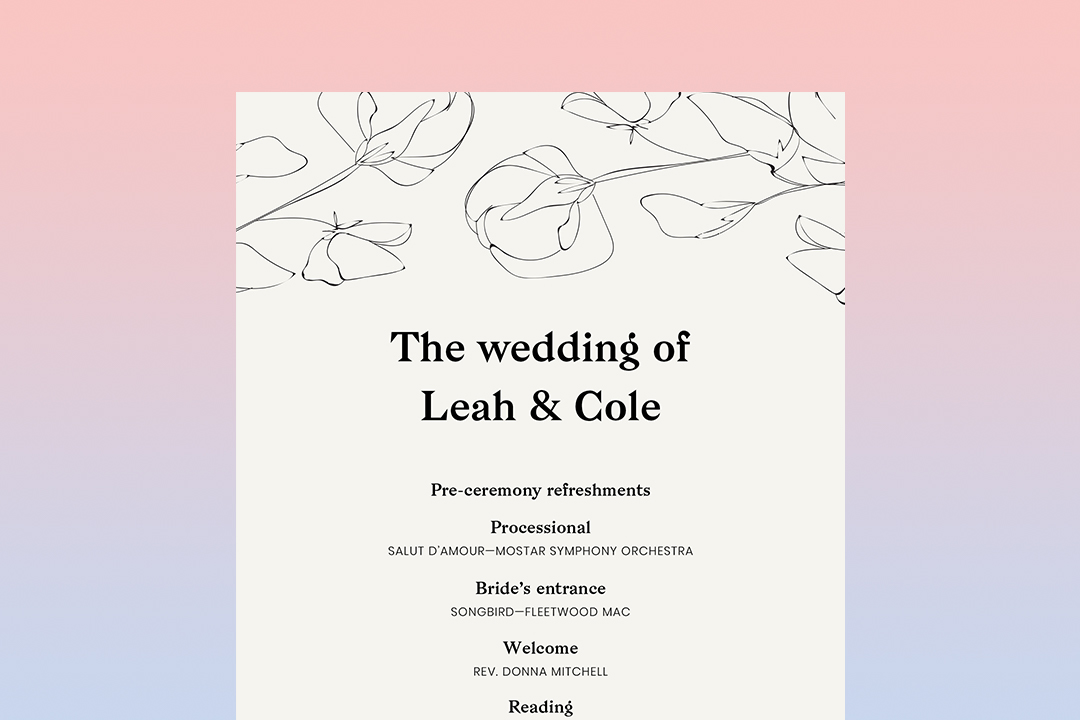
A Guide to Wedding Ceremony Programs
Inspiration
Wedding ceremony programs communicate valuable information to your guests about your ceremony service—find out all you need to know to choose, word, and personalize your wedding programs.
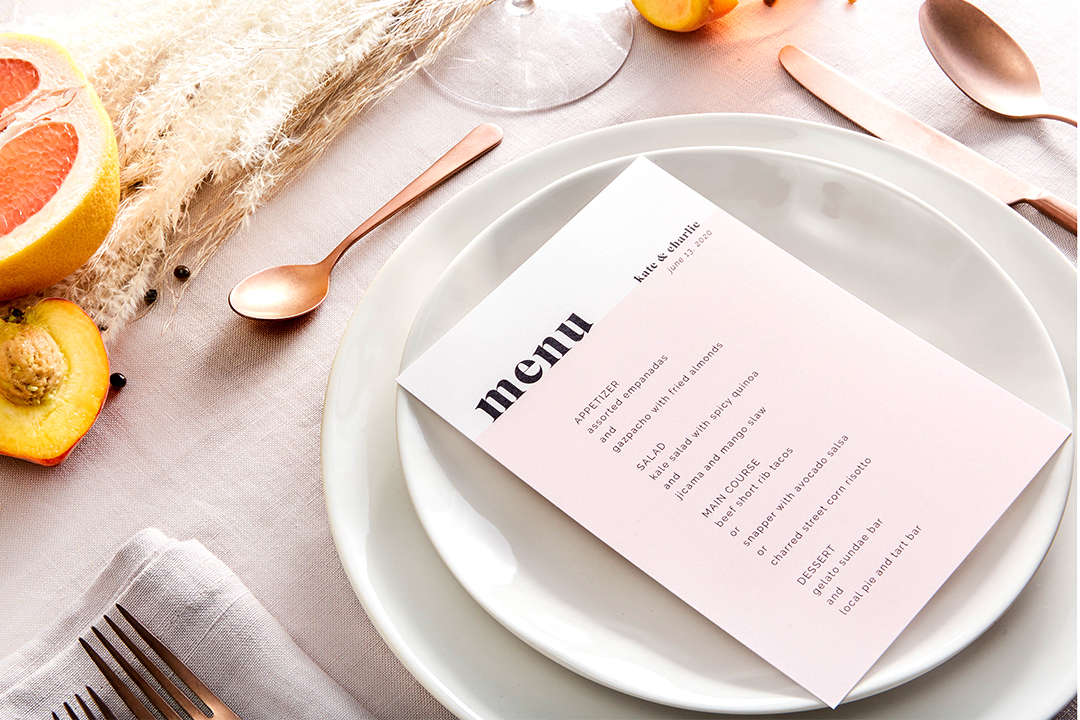
A Guide to Wedding Menu Cards
Inspiration
Discover everything there is to know about wedding menu cards in our guide.
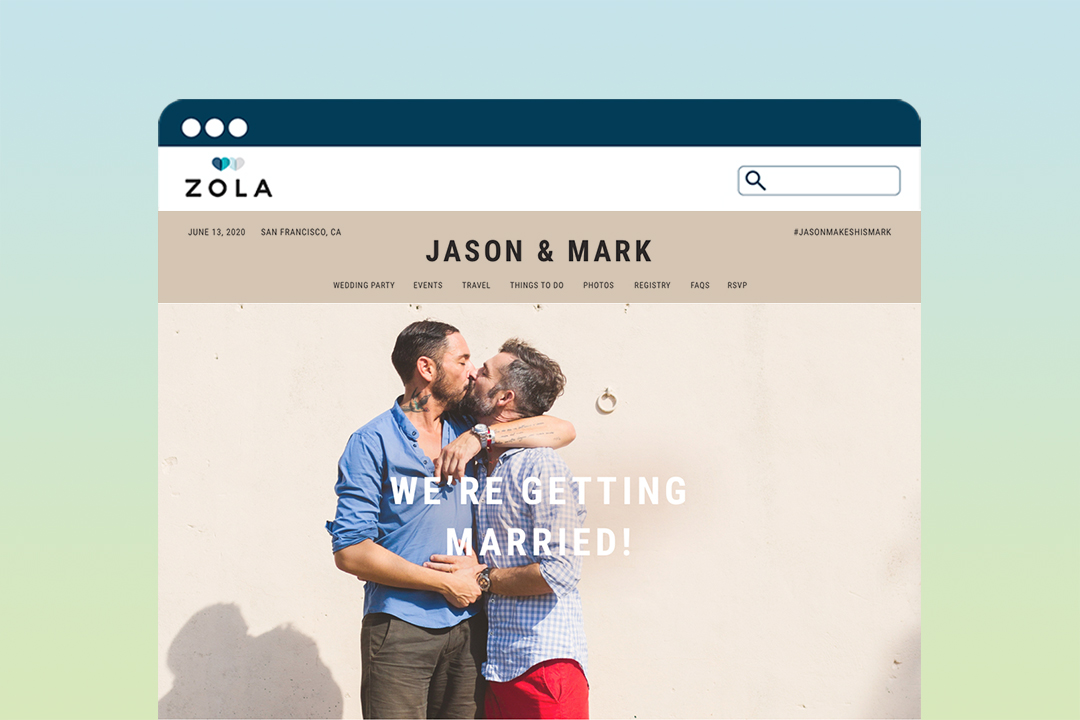
A-Z List of What to Put on Your Wedding Website
Inspiration
Check out our comprehensive, A-Z list covering everything you should add to your wedding website so you don't forget any important details.
- Expert advice/
- Invites & paper/
- Invitations/
- Wedding Details Card: Everything To Know
Find even more wedding ideas, inspo, tips, and tricks
We’ve got wedding planning advice on everything from save the dates to wedding cakes.
